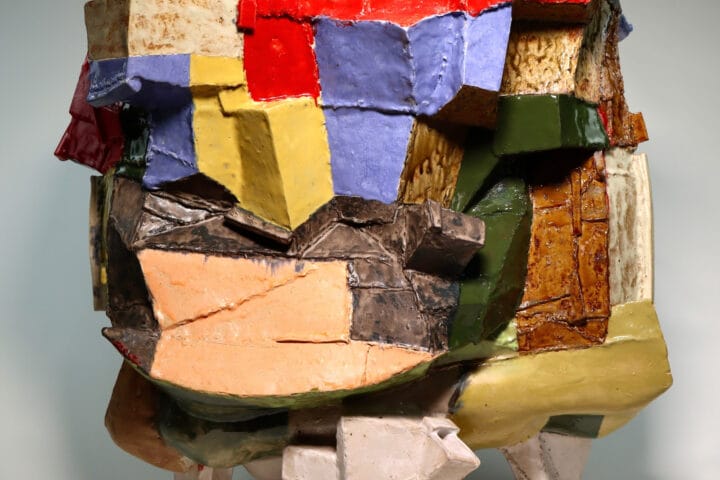…that most nomadic of all qualities, the ability to think in diverse and divergent ways
Anthony Sattin
Nomadic Resonance celebrates the launch of Anthony Sattin’s latest book, Nomads: The Wanderers Who Shaped Our World, by highlighting the works of artists such as El Anatsui, Brion Gysin, Romuald Hazoumè, Rachid Koraïchi, Alexis Peskine, Sylvie Franquet, LR Vandy and Carol Beckwith & Angela Fisher.
The show will include a new, large-scale work by El Anatsui, who first coined the term ‘nomadic aesthetic’ to indicate the broad range of freedoms discoverable within his sculptures. The modularity of these emergent material structures, composed of metal bottle-caps, confers an ease in folding, packing and transporting them to different sites, and allows them to hang in a wide variety of arrangements. This topological flexibility lets both artist and curators explore a surprising range of spatially adaptive reconfigurations.
The French artist and writer, Jean-Jaques Lebel, described Brion Gysin as being ‘perpetually “in flux” …always torn between several directions…languages… rhythms…continents…lifestyles.’ A visual artist, writer and performer, Gysin playfully explored image and sound using paint, collage, light, writing, film and audio. His legendary cut-up technique challenged accepted ways of seeing, thereby altering the course of late 20th century art. Gysin’s scriptorial abstractions, situated between Japanese and Arabic calligraphic glyphs, map the extraordinarily meandering mind of this visionary who never stopped wandering.
Rachid Koraïchi’s large-scale projects employ diverse elements commonly executed in widely divergent places, either in collaboration with practitioners of ancient, traditional crafts or employing sophisticated modern technological processes. Three poignant vases from Koraïchi’s Lachrymatoires Bleues (2020) series, created under the intense conditions of pandemic ‘lockdown’ in Barcelona, will be on display.
Alexis Peskine reflects his own compound, multi-cultural heritage by making work in a variety of places, as he travels the world to take up residencies in Senegal, Brazil, Angola, Italy and Cameroon. A selection of the signature gold leaf on nail ‘portraits’ created by this actively peripatetic artist, in a recent visit to Florence, will be shown.
Sylvie Franquet has travelled extensively in North Africa and the Middle East, and has spent her life making art while on the move. Franquet explores the practice of stitching found materials together, a process she considers to be simultaneously subservient and rebellious. Only by engaging in alternative ways of investigating our world can the inquisitive needle pierce the limiting layers of artistic conventions.
LR Vandy uses widely sourced objects she collects to transform the hulls of model boats into animated ‘masks’. Such unrelated items as fishing floats, porcupine quills and acupuncture needles ‘speak directly’ to her, as she overcomes material differences to explore feelings of attraction, repulsion, danger and protection. Vandy’s evocative ‘masks’ conjure nuanced resonances from these many objects’ histories, joining dissimilar pasts together to present imaginatively possible futures.
Also featured will be photographs of the Dinka people of Southern Sudan by Carol Beckwith and Angela Fisher. The well-known images of these inveterate and intrepid travellers portray the complex lives and cultures of the many African peoples and cultures, both nomadic and settled, that continue to inspire their outstanding work.
Finally, Romuald Hazoumè claims that the aré, or traditional Yoruba artist, must travel and settle amongst other peoples, creating for and learning from them – before again moving on. Hazoumè makes ironic use of the ubiquitous plastic jerry can (made in Germany) to create his iconic masks. By ‘repurposing’ these and many other alien objects sent to Africa, he ‘returns them on their journeys’, sent back as his outspoken messengers to hang on the walls of international galleries and museums.
Each of these selected artists strikes unique resonances from the nomadic aesthetic Anthony Sattin weaves so eloquently into the pages of his remarkable book.













